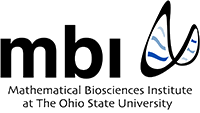
Galois Representations
During both terms of the 2010-11 year, the School of Mathematics held a special program on Galois Representations and Automorphic Forms. The program was organized by the School’s Distinguished Visiting Professor, Richard Taylor of Harvard University. The program had about 33 long-term participants and many other people visited for shorter periods. Six mini-courses were organized (41 hours in...

GPS Algorithms
The Global Positioning System (GPS) is global navigation system consisting of at least twenty-four satellites orbiting in six planes around the earth. GPS is extensively used by both the military and the FAA, with growing applications in civilian markets. The importance of GPS in everyday and military life continually increases with the development of smart phones and TomToms and the pressing...

Math Modeling Holds the Key to Manufacturing Breakthroughs
Many modern manufacturing processes rely on extrusion: either pushing or drawing a thick fluid containing suspended hard particles through a dye to form parts. This process is so complicated that – until now – understanding it has been more of an art form than a science. The way that the material being extruded behaves can vary widely, depending on factors such as temperature, pressure, the...

Multiscale Representation of Macromolecular Motion
How many variables do we need to describe macromolecular motion? The answer depends on the time and length scale of interest. By analyzing the geometry of the space defined by long molecular dynamics trajectories of macromolecular systems, we find that different regions of the configurational space have different local intrinsic dimension and local spatial scale. When this local heterogeneity...

Secret Identity of Supercharacters
The AIM workshop “Supercharacters and combinatorial Hopf algebras,” which took place in May 2010, solved one of the open problems in supercharacter theory and resulted in a paper authored by all 28 of the workshop participants. The character theory of p-groups, such as U(n), the group of n x n uppertriangular matrices with coefficients in a finite field Fq (and ones on the diagonal) is a...

Inverse Problems and Invisibility
In inverse problems one probes an object with a particular type of field and measures the response. From these measurements one aims to determine the object’s properties or geometrical structure. Typically, the interaction is restricted to a bounded domain with boundary: a part of the human body, the solid earth, the atmosphere, an airplane, etc. Experiments can be carried out on the boundary,...

Smoothing Surfaces with Corners
While visiting the IMA in early 2001, Tom Duchamp of University of Washington, a geometer who works in computer graphics, attended a talk by postdoc Selim Esedoglu on image denoising. He wondered if the denoising method that Esedoglu described, which preserves image edges, could be modified to smooth surfaces that have edges and corners. The two started worked on this problem at the IMA but...

It’s All in the Symmetries
Analytic and Geometric Number Theory The tools used in modern number theory range over many fields from algebra and algebraic geometry to harmonic analysis, representation theory, ergodic theory and combinatorics. Central to the study of many problems concerning prime numbers, diophantine equations and number fields, are sieve methods, L-functions (and with these the theory of automorphic...

Flipping a Switch
Fighting TB Might be a Matter of ‘Flipping a Switch’ in Immune Response In the lung, alternatively activated macrophages (AAM) form the first line of defense against microbial infection. Due to the non-inflammatory nature of AAM, the lung can be considered as an immunosuppressive organ for respiratory pathogens. However, as infection progresses in the lung, another population of macrophages,...

Next Generation Auto Safety Systems
Imagine you are driving at night on a twisty mountain road. A deer jumps out of nowhere ahead of you. You turn your car to avoid it, and all four wheels of your car hit an icy patch. You instinctively slam on the brakes. Without a computer-controlled safety system this would most likely lead to a serious accident. Instead, the safety system kicks in. It reads the direction and speed of your...